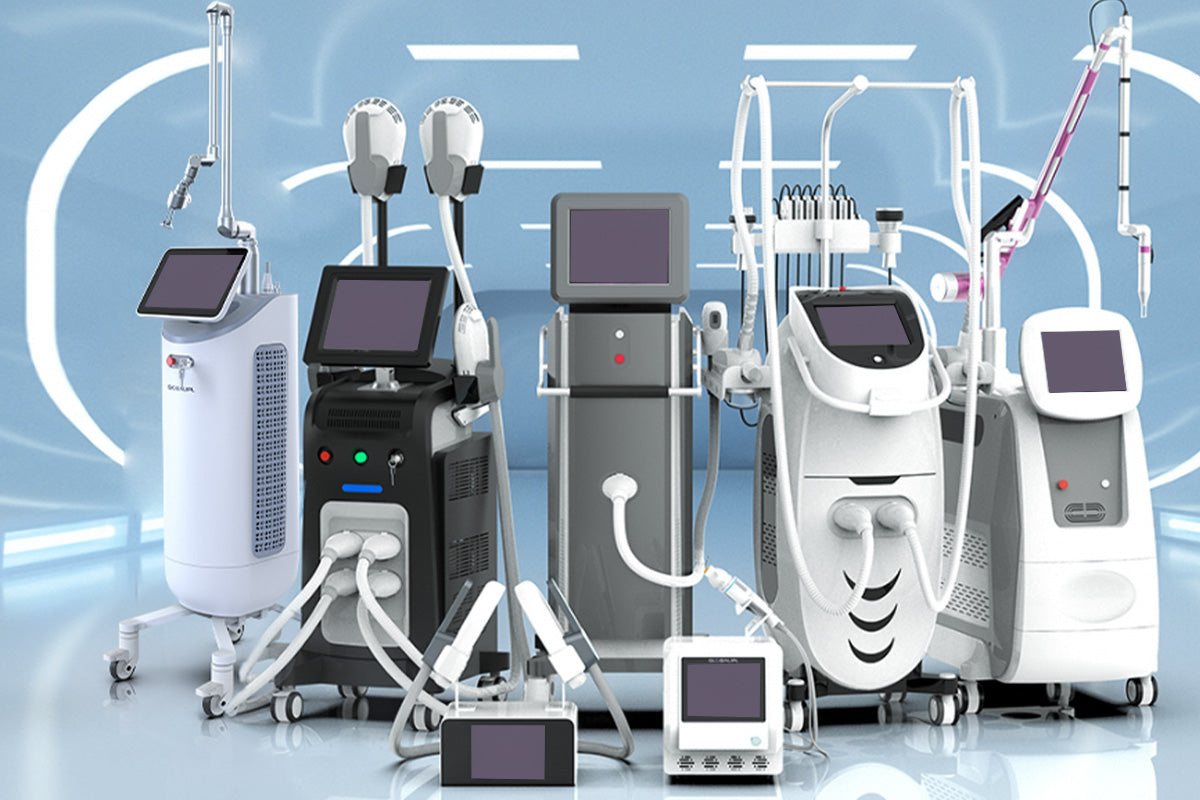
Ultrasound cavitation use in Aesthetics medicine
Basic Principle:
Cavitation, also known as ultrasonic cavitation or ultrasound cavitation, is a non-invasive body contouring treatment that uses low-frequency ultrasound waves to break down fat cells.
how cavitation is used for body contouring:
Targeted Fat Reduction:
- Cavitation is particularly effective for stubborn fat deposits that resist diet and exercise.
- Common areas include love handles, abdomen, thighs, and upper arms.
- It can help sculpt and refine body shape by reducing localized fat.
Mechanism for Contouring:
- Ultrasound waves disrupt fat cell membranes, causing them to release their contents.
- This leads to a reduction in the size and number of fat cells in the treated area.
- As fat is reduced, the body's contours become more defined.
Treatment Strategy:
- Multiple sessions are typically needed for noticeable contouring effects.
- Treatments are usually spaced 1-2 weeks apart.
- A customized plan is created based on the patient's specific goals and body type.
Precision in Contouring:
- The handheld device allows for precise targeting of specific areas.
- This enables practitioners to sculpt and shape particular body zones.
- Can be used to enhance muscle definition by reducing overlying fat.
Combination with Other Techniques:
- Often combined with radiofrequency for skin tightening.
- May be used alongside lymphatic drainage massage to enhance fat elimination.
- Some clinics pair it with pressure therapy or other circulation-boosting treatments.
Results and Expectations:
- Typical circumference reduction ranges from 1-5 cm per treated area.
- Results are gradual and become more noticeable over several weeks.
- Best results are seen in patients who maintain a healthy lifestyle.
Advantages for Body Contouring:
- No incisions or anesthesia required.
- Can treat larger areas compared to some other non-invasive methods.
- No downtime, allowing patients to return to normal activities immediately.
Limitations in Contouring:
- Not as dramatic as surgical options like liposuction.
- May not be effective for very thick fat deposits.
- Results can be less predictable than surgical alternatives.
Ideal Candidates:
- Those within 15-20 pounds of their ideal weight.
- Individuals with good skin elasticity for better contouring results.
- People looking for subtle refinement rather than significant fat loss.
Customization for Different Body Types:
- Treatment can be tailored to address specific problem areas.
- Intensity and duration can be adjusted based on fat thickness and desired outcome.
Maintenance of Contours:
- Results are long-lasting if weight is maintained.
- Some patients opt for yearly touch-up treatments.
- Continued healthy diet and exercise are crucial for maintaining results.
Measurable Outcomes:
- Practitioners often use before and after photos for visual comparison.
- Circumference measurements are taken to track progress.
- Some clinics use 3D imaging technology to demonstrate volumetric changes.
Patient Satisfaction:
- Generally high satisfaction rates, especially for those with realistic expectations.
- Many patients appreciate the non-invasive nature and lack of downtime.
Limitations for Severe Cases:
- May not be sufficient for patients with significant skin laxity.
- Less effective for individuals with BMI over 30.
Emerging Trends:
- Some new protocols combine cavitation with muscle stimulation for enhanced body sculpting.
- Integration with apps for tracking progress and maintaining results.
Cavitation for body contouring offers a non-surgical option for individuals looking to refine their shape and address stubborn fat areas. While it can produce noticeable improvements, it's important to understand that results are typically more subtle than surgical alternatives.
The best outcomes are achieved when cavitation is part of a comprehensive approach including a healthy diet and regular exercise.

Cavitation, also known as ultrasonic cavitation or ultrasound cavitation, is a non-invasive body contouring treatment that uses low-frequency ultrasound waves to break down fat cells.
how cavitation is used for body contouring:
Targeted Fat Reduction:
- Cavitation is particularly effective for stubborn fat deposits that resist diet and exercise.
- Common areas include love handles, abdomen, thighs, and upper arms.
- It can help sculpt and refine body shape by reducing localized fat.
Mechanism for Contouring:
- Ultrasound waves disrupt fat cell membranes, causing them to release their contents.
- This leads to a reduction in the size and number of fat cells in the treated area.
- As fat is reduced, the body's contours become more defined.
Treatment Strategy:
- Multiple sessions are typically needed for noticeable contouring effects.
- Treatments are usually spaced 1-2 weeks apart.
- A customized plan is created based on the patient's specific goals and body type.
Precision in Contouring:
- The handheld device allows for precise targeting of specific areas.
- This enables practitioners to sculpt and shape particular body zones.
- Can be used to enhance muscle definition by reducing overlying fat.
Combination with Other Techniques:
- Often combined with radiofrequency for skin tightening.
- May be used alongside lymphatic drainage massage to enhance fat elimination.
- Some clinics pair it with pressure therapy or other circulation-boosting treatments.
Results and Expectations:
- Typical circumference reduction ranges from 1-5 cm per treated area.
- Results are gradual and become more noticeable over several weeks.
- Best results are seen in patients who maintain a healthy lifestyle.
Advantages for Body Contouring:
- No incisions or anesthesia required.
- Can treat larger areas compared to some other non-invasive methods.
- No downtime, allowing patients to return to normal activities immediately.
Limitations in Contouring:
- Not as dramatic as surgical options like liposuction.
- May not be effective for very thick fat deposits.
- Results can be less predictable than surgical alternatives.
Ideal Candidates:
- Those within 15-20 pounds of their ideal weight.
- Individuals with good skin elasticity for better contouring results.
- People looking for subtle refinement rather than significant fat loss.
Customization for Different Body Types:
- Treatment can be tailored to address specific problem areas.
- Intensity and duration can be adjusted based on fat thickness and desired outcome.
Maintenance of Contours:
- Results are long-lasting if weight is maintained.
- Some patients opt for yearly touch-up treatments.
- Continued healthy diet and exercise are crucial for maintaining results.
Measurable Outcomes:
- Practitioners often use before and after photos for visual comparison.
- Circumference measurements are taken to track progress.
- Some clinics use 3D imaging technology to demonstrate volumetric changes.
Patient Satisfaction:
- Generally high satisfaction rates, especially for those with realistic expectations.
- Many patients appreciate the non-invasive nature and lack of downtime.
Limitations for Severe Cases:
- May not be sufficient for patients with significant skin laxity.
- Less effective for individuals with BMI over 30.
Emerging Trends:
- Some new protocols combine cavitation with muscle stimulation for enhanced body sculpting.
- Integration with apps for tracking progress and maintaining results.
Cavitation for body contouring offers a non-surgical option for individuals looking to refine their shape and address stubborn fat areas. While it can produce noticeable improvements, it's important to understand that results are typically more subtle than surgical alternatives.
The best outcomes are achieved when cavitation is part of a comprehensive approach including a healthy diet and regular exercise.

Previous post
Cryolipolysis Slimming treatment
Next post





